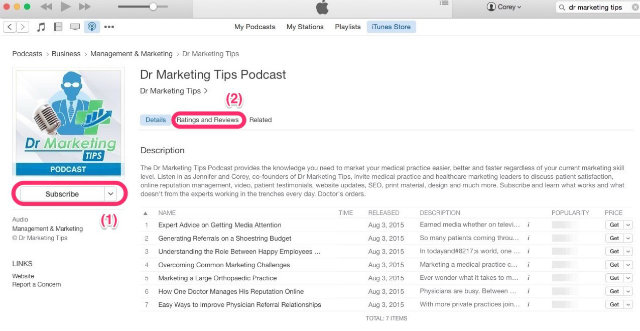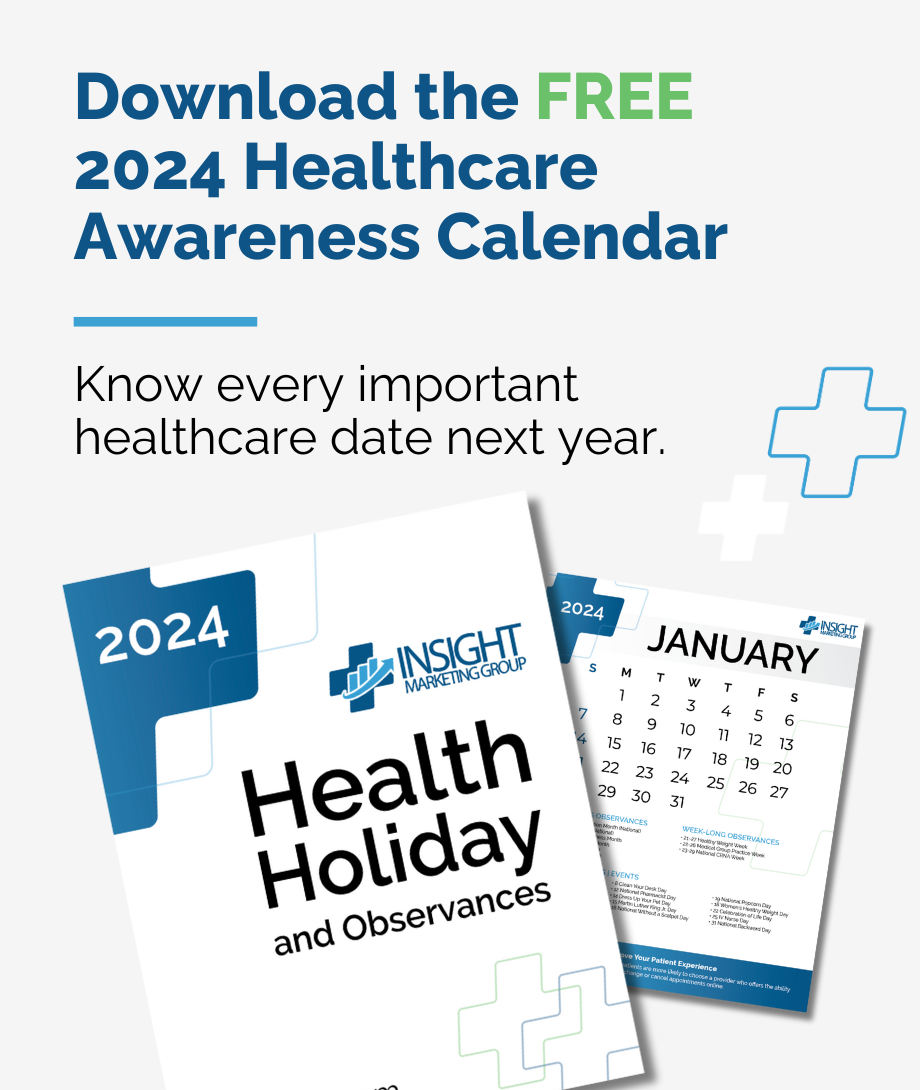 If you’re like most practice managers, you’ve gone to great lengths and have even jumped through a few hoops trying to bring new patients through the door—all to feel like you’ve gone two steps forward and then three steps back after getting hit with yet another 1-star review.
If you’re like most practice managers, you’ve gone to great lengths and have even jumped through a few hoops trying to bring new patients through the door—all to feel like you’ve gone two steps forward and then three steps back after getting hit with yet another 1-star review.
What most practice managers fail to understand is that 1-star reviews typically have nothing to do with the doctor’s care but stem from a complaint about an employee’s actions, demeanor, or behavior.
As practice managers, we’re spending entirely too much time and money focusing on ‘managing’ our reputation, while spending little to no time getting to the root of the problem. In fact, instead of focusing on the cause, the solution is often to increase the marketing budget.
Marketing your medical practice today is entirely unlike what it was just ten years ago. Today’s patients are more in the driver’s seat than ever before when it comes to choosing and managing their healthcare. Worse yet, a patient’s perceived overall experience at your practice will make or break your reputation online. This means that everyone at your practice (no matter how visible or invisible) plays a vital role in overall patient satisfaction and the overall reputation of your office.
In this week’s episode, Susan Makowski, Client Success Manager at Insight Training Solutions, breaks down the number one way you can limit 1-star reviews. She also shares 5 ways you can boost your employees’ customer service performance.
Tune in to discover:
- How marketing your medical practice has radically changed over the years
- The importance of creating a connection with your patients
- Simple and powerful ways your staff can go the extra mile for your patients
- Why improving the (perceived) patient experience is now a team effort
Free Healthcare Awareness 2024 Calendar
Nearly every month of the year has a health holiday or observance, and there are also a number of awareness months that your patients and staff would love to know about. You also don’t want to miss chances to celebrate with your practice’s followers.
Free Healthcare Awareness 2023 Calendar
Nearly every month of the year has a health holiday or observance, and there are also a number of awareness months that your patients and staff would love to know about. You also don’t want to miss chances to celebrate with your practice’s followers.
Transcription
Speaker 1: Doctor Marketing Tips. Paging Doctor Marketing Tips. Doctor Marketing Tips, you’re needed in the marketing department.
Speaker 2: Welcome to the Doctor Marketing Tips podcast. Your prescription to the answers you seek to grow your medical practice easier, better, and faster. This show is all about connecting practice administrators and medical marketing professionals with peers working in practices. Learning from experiences, making mistakes, and sharing successes. Let’s get started.
Jennifer: Hey there. Welcome to the Doctor Marketing Tips Podcast. This is Jennifer. And later on in this episode we’re gonna be joined by Susan. And Susan is part of our team over at Insight Training Solutions. And I thought she’d be a really good person to bring on the show today to talk about, kind of, what we can do to work with our employees and help them help us get better reviews and help manage the practice reputation. I’ve been doing this since 2006, I’ve had this business that focus’s on medical practice marketing. And been working exclusively in the medical field since 2008 when I got my first healthcare related client, which was really large orthopedic practice. And even in the short 15 or so years that I’ve been doing this, a lot of things have changed over the years. You know, marketing is a different animal than it used to be back when I was fresh out of college working for a big fortune 500 company.
And it evolved in 2006, when I got into this space. And then healthcare has just changed by leaps and bound. The old way, as it relates to independent physician practices, the old way was not even to do any marketing. In fact, the american medical association way back in the day, frowned on marketing the medical practice. They said, basically, doctors are above that, they don’t need to spend money on advertising and marketing. And then, years later, a little bit of marketing was all right, you could market your practice, maybe with one on one visits to other offices, where you’re focusing on those referral relationships. A lot of you still do it where you’re marketing your practices on fax machines. I’ve got people that work for me now, that don’t even know what a fax machine is. And then, somewhere along the way, it became normal to go ahead and build your first website for your practice.
And, there’s a lot of you out there that still have that first website that you built in 1993. And then the websites evolved a little bit and then you got into trying to show up on search engines. But then the next evolution was to have a content strategy in place and everybody was told they needed to get on to social media at some point, you know, when Facebook became the norm. And then social media turned into using it, not just to talk about yourselves, but to use it as a customer services channel. In fact, that’s such a popular topic. I speak at conferences, usually throughout the year, and this year’s topic and last year’s topic is all about developing your customer service program on social media and how you can grow your practice that way. That was a hot topic a couple years ago and it really, it still remains relevant. But, as this kind of … this pendulum has swung from marketing your medical practice, it has become imperative that we claim our listings on all those star rating sites.
Or claim our listings for our locations if you have multiple locations, so that you show up on search engines. Then, you got all these star rating sites and online reviews. And those all came into the equation, and it feels like that’s what we talk about all the time now. Here we are today, patients are … they’re in control more than they’ve ever been in control, and not only do the doctors have to deliver excellent care, but now, you’ve got to concern yourselves with CCAP scores and HCAHP scores and some random anonymous review site online. And chances are, that review that’s left on your physician, it may not even have anything to do with the physician themselves. It might have something to do with somebody else. At this point, it’s all of our jobs to market the medical practice. So, we go from full swing of the pendulum. We go from no marketing, to everybody on your team is in charge of marketing the practice.
If you like what you’re hearing and need some help marketing your medical practice this year, be sure and check us out at InsightMG.com. That’s Insight, M as in marketing, G as in group, .com. Don’t think you’ve got a budget for this kind of stuff, think again. We’ve got you covered. Make sure you schedule a free consult today.
As somebody who does this every single day, we are constantly spinning our wheels trying to mitigate one-star reviews. And most of the time it has nothing to do with the doctor and everything to do with an employee, like the front desk person or a billing person or a communication issue, where the doctor might have been running late but nobody shared, kind of, why the doctor was running late. Maybe he was stuck in traffic or he was in the emergency room tending to a patient. The way that generations work now, we just don’t communicate that and so we have different perceptions and we’re also quick to pull the trigger on leaving a nasty review. So, what are we supposed to about all this, because marketing has changed? And I really think the answer is that we need to, as practices and as business, we need to yes, have a strong marketing plan in place, but what we really need to do is focus on our people.
It’s time that we focus on correcting the reason for the one-star review in the first place. Instead of chasing our tails trying to put more positives out there and spending and throwing tons of cash into marketing and developing robust content solutions. I think that there’s a certain level of that, that’s important, but it’s time now, the shift has taken place, that we need to focus on making sure that everybody in our practice knows how even the smallest role that they might be playing behind the scenes, is playing into the overall reputation of the practice. What they’re doing, even if they never interact with the patient, is potentially moving the needle on the reputation, either towards the five-star ratings or the one-star ratings. And that’s why we created this new company, which is Insight Training Solutions because my clients have asked me to fix the problem. And the only real fix, is to focus on the root of the problem, which is making sure that our employees are trained, that everybody understands their role in the big equation.
And that’s why I want to go ahead and introduce Susan, who is helping us with Insight Training Solutions. And she is the voice behind the patient experience modules that we have just launched. And Susan is gonna offer us some tips that you can take away, right now, to help develop your customer service program with your employees today, over at your practice. And so, with that, I wanna introduce Susan. Hey, Susan, how are you?
Susan: Hey, Jennifer. Thanks for having me. And this is a great topic. You mentioned before that patients are in control more now, due to technology and we know that online reviews have surpassed the word of mouth. And that really puts a focus on customer service.
Jennifer: Yeah. It totally does. Do you have any tips for customer service that our listeners can implement back at their office right away?
Susan: Absolutely. I can give you five quick tips right now. And we can start with the first one. Create a connection that’s long lasting, and it’s not for the moment.
Jennifer: What do you mean by that?
Susan: Before it was, I’m gonna answer your question and then I’m gonna move on. Now it’s, Why don’t you identify an opportunity that makes an impact with them?
Jennifer: You mean like with the patient directly?
Susan: Correct. Instead of if they call in and ask a question of where you’re located, you don’t just answer the question and hang up. You put something else in there and say, “Are you familiar with where we’re located?” And then go into where you’re located and be specific about locations and intersections and … because you never know if someone, a caregiver might be driving them there, instead of the patient themselves.
Jennifer: Absolutely. And this would really apply to the older generation of patients. So, I think that’s a great time. Put yourself … Create a connection that is long lasting so then they can reference and say, “I talked to that person that was so nice to me, she gave me detailed directions.” It goes back to that whole adage where you add stories to conversation because people will remember those stories, which is why you go into those extra details. What’s your next tip?
Susan: Put yourself in the shoes of the patient. Create that connection and understand why they’re coming into the office.
Jennifer: Absolutely. I’ve got one. How about go the extra step?
Susan: Perfect.
Jennifer: Go the extra step. It’s always, let me answer your question. And how about this also?
Susan: Exactly.
Jennifer: I can do this, plus this.
Susan: You are being a resource for them, at that point.
Jennifer: Absolutely.
Susan: And another one would be, focus on what matters most. We know that taking care of their health is that number one priority, and you also have to make them feel valued.
Jennifer: Absolutely. And then, what’s your final tip?
Susan: It’s a team effort.
Jennifer: What do you mean by that?
Susan: Everybody from front desk to the technicians to billing, everybody has to understand and be on board, that it’s all about the experience now. And if somebody, if a patient asks me a question and my job responsibilities are, let’s say, up at the front desk, at the front office, then if it’s something to do with billing, maybe I can say to them, “You know what? Hold on, let me find out for you”, instead of just, “Well, that’s not my job”. And then where do you go from there? But, be that resource and be part of the team and say, “You know what? Let me find that out for you.”
Jennifer: Hey there. Replacing an employee can be expensive, upward of 50% of that employees annual salary. Did you know that only 33% of your employees are actually engaged at work? Well, what if you could invest in engaging and training your employees for as little as $8 per month? With training that’s specific to the challenges you face in your medical practice, like customer service, patient experience, communicating across generations, just to name a few. Well, visit us at InsighMG.com to find out more about how our employee engagement and training platform can help you strengthen employee retention, develop patient service mindsets, and give you peace of mind when it comes time for annual reviews. All without creating any additional work for you, and it’s only eight buck a month. So, check us out at Insight, M as in marketing, G as in group, .com. We’ll be waiting for you.
If everybody would be part of the team, then we probably wouldn’t have these one-star reviews. And I think that’s where it’s become so frustrating, is that from a marketing standpoint, we’re out there doing everything we can. And from a clinician and a provider standpoint, they’re doing their job. They’re delivering the care that they have been educated to deliver. And the complaints are typically not when it’s one-on-one with the provider and the patients. The complaints that we see, are that 75% of the time the patients experiences with a front office person or a billing question or a communication break-down, not with the doctor and those are the complaints that we need to be getting in front of. So, these are really useful customer service tips, and I think if our listeners can take these customer service tips back to their practice, and really start focusing on the people within the practice. Then we can all stop mitigating these one-star reviews.
And so, I think this is great information. And Sue, thank you for joining me here today. I think our listeners are gonna get a lot out of this. And with that, I’m Jennifer.
Susan: I’m Susan.
Jennifer: And we’ll see you next time on the Doctor Marketing Tips Podcast. Thanks for joining us.
Speaker 2: Thanks for listening to the DrMarketingTips.com Podcast. If there’s anything from today’s show you want to learn more about, check out DrMarketingTips.com for our podcast resource center with all the notes, links, and goodies we mentioned during the show. If you’re not already a subscriber to our show, please consider pressing the “Subscribe” button on your podcast player, so you never miss one of our future episodes. And if you haven’t given us a rating or review yet on iTunes, please find a spare minute and help us reach and educate even more of our medical practice peers. Thanks again for listening. And we’ll catch you next time. Doctors orders.
Subscribing and Rating Our Podcast
If you like what you heard, please take a few seconds and subscribe, rate and review our show on iTunes. Here’s how:
Subscribe
To subscribe, click this link to open iTunes on your computer or press the green “Subscribe” button under the podcast player on this page just above this message. Once you’re in iTunes, you’ll find a “Subscribe” button as denoted by the (1) on the image below. After you’re subscribed, click the “Ratings and Reviews” button (2).

Ratings and Reviews
To leave us a rating and review, select the “Ratings and Reviews” button referenced above (2). Once there, select a star rating for the show (3) and leave your brief review (4).

